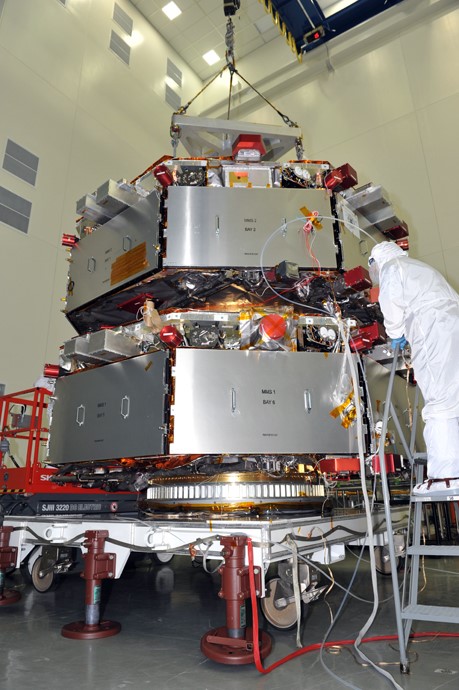Interplanetary Shock Observations Give Scientists Greater Insight into Deep Space Activity
By Dawn Allcot
The sun is always releasing streams of charged particles, dubbed “solar winds.” When a fast-moving solar wind stream overtakes a slower stream, it creates a shock wave, much like a boat moving through water creates a wake, resulting in waves that spread across the water.
Similarly, these shockwaves – interplanetary shocks – spread across the solar system. Studying these shocks can give scientists greater insight into other collision-less shocks across the galaxy, including those in supernovae, black holes, and on distant stars.
But interplanetary shocks emanating from solar waves aren’t always easy to catch. It involves having the right research equipment running at the right place and the right time. After four years, NASA’s Magnetospheric Multiscale (MMS) spacecraft has done exactly that, making the first high-resolution measurements of an interplanetary shock.
MMS used its Fast Plasma Investigation, a suite of instruments that can measure ions and electrons around the spacecraft at up to 6 times per second. Since the speeding shock waves can pass the spacecraft in just half a second, this high-speed sampling was essential to catching the shock.
Viewing the data, the scientists noticed a clump of ions from the solar wind. Shortly after, they saw a second clump of ions, created by ions already in the area that had bounced off the shock as it passed by. Analyzing this second population, the scientists found evidence to support a theory of energy transfer first posed in the 1980s.
MMS consists of four identical spacecraft, which fly in a tight formation that allows for the 3D mapping of space. Since the four MMS spacecraft were separated by only 12 miles at the time of the shock (not hundreds of kilometers as the previous spacecraft had been), the scientists could also see small-scale irregular patterns in the shock.

Due to the timing of the orbit and instruments, MMS is only in place to see interplanetary shocks about once a week. After seeing the first, however, scientists are confident the MMS will find more. but the scientists are confident that they’ll find more. Finding weaker shock events, which are even less understood, could help open up a new regime of shock physics.
Story via NASA Goddard Space Flight Center

